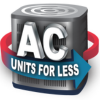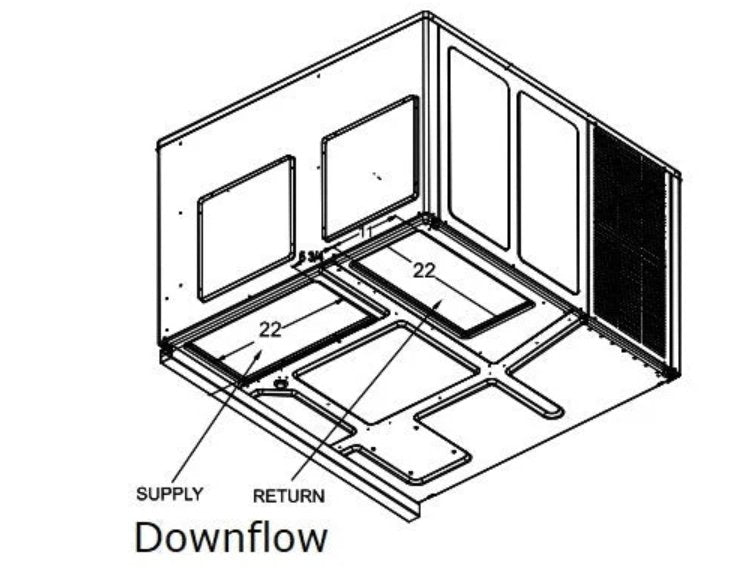An efficient HVAC (Heating, Ventilation, and Air Conditioning) system relies on two essential components: supply and return air systems. These elements play a crucial role in maintaining the comfort and air quality of your home by circulating air through your heating and cooling equipment. Understanding how the HVAC supply and return work can help you optimize your system’s performance, ensuring that your home remains comfortable, energy-efficient, and safe.
In this comprehensive guide, we’ll break down the differences between HVAC supply and return systems, how they work together, and why they are vital for proper airflow and energy efficiency.
What Is HVAC Supply and Return Air?
The HVAC supply and return air systems are part of your home’s ductwork that move air to and from your heating and cooling units. Their primary function is to ensure balanced airflow within your home, distributing conditioned air (either heated or cooled) through your living space and then returning the used air back to the HVAC system for filtering and reconditioning.
- Supply Air: The air that is conditioned by your HVAC system (heated or cooled) and sent into the rooms of your home through supply vents.
- Return Air: The air that has been circulated through the rooms, now warmer or cooler, and pulled back into the HVAC system through return vents for reconditioning.
How Does the HVAC Supply System Work?
The supply side of your HVAC system is responsible for delivering conditioned air into your home’s living spaces. Here’s how it works:
1. Conditioning the Air
The air conditioning or heating process begins when the HVAC unit draws air from the indoor environment or outdoors. This air is either cooled (if using an air conditioner) or heated (if using a furnace or heat pump), depending on your thermostat setting.
2. Distributing Conditioned Air
Once the air is conditioned, the system’s blower fan pushes the air through a network of ducts leading to supply vents or grilles placed in various rooms. These vents are typically located on walls, floors, or ceilings and are designed to direct air evenly throughout your living space.
3. Supply Vents and Dampers
Supply vents can have adjustable louvers or dampers that allow you to control the flow of air in individual rooms. By adjusting the dampers, you can regulate the amount of conditioned air entering each room, improving comfort in different zones of the home.
4. Positive Air Pressure
The supply air system works to create positive air pressure in your home. This pressure ensures that new, conditioned air constantly replaces the older air, keeping the environment comfortable and reducing pollutants or allergens.
How Does the HVAC Return System Work?
The return air system is just as important as the supply side. It is responsible for drawing air back from the living spaces into the HVAC unit. Here's how it functions:
1. Pulling Air from the Room
The air that has already been circulated through the supply vents becomes warmer or cooler, depending on the season. The return vents or return grilles pull this air back into the HVAC system for recycling. These return vents are usually larger than supply vents and are placed in central locations to effectively capture the air from multiple rooms.
2. Filtration of Air
As the air is drawn back into the system, it passes through the HVAC filter, where dust, dirt, and airborne contaminants are trapped. This filtration process is vital for maintaining indoor air quality and ensuring that the HVAC components (like coils and blower fans) remain free of dust buildup.
3. Reconditioning and Recirculating
After the air is filtered, it goes back to the HVAC unit, where it is either reheated or cooled again. This newly conditioned air is then pushed back through the supply ducts to be redistributed into your home.
4. Balancing Air Pressure
The return system maintains neutral air pressure in the house by removing air at the same rate that new air is being supplied. If the return system isn’t balanced correctly, it could create negative pressure, which might pull outdoor air into the home and result in uneven temperatures or poor air quality.
The Importance of Balanced Supply and Return Airflow
For your HVAC system to operate efficiently, the supply and return airflow must be properly balanced. This ensures that your system isn’t overworked and that air circulates evenly throughout the house. Here’s why balanced airflow is important:
1. Energy Efficiency
A well-balanced system keeps your HVAC unit from overworking, thus reducing energy consumption and lowering utility bills. If your system supplies more air than it can return, or vice versa, it may cycle on and off frequently, consuming more energy in the process.
2. Improved Comfort
Properly balanced airflow ensures even distribution of conditioned air throughout all rooms. If the air supply is inadequate in some areas, those rooms may feel too hot or cold, causing discomfort.
3. Enhanced Air Quality
A balanced system improves indoor air quality by ensuring proper filtration and reducing the likelihood of airborne contaminants being trapped in the ductwork. If the return air system isn’t working efficiently, air may not be filtered properly, leading to dust and allergens being recirculated.
4. Longer System Lifespan
When the supply and return systems are balanced, your HVAC equipment doesn’t have to work as hard to maintain your desired temperature. This reduced strain can prolong the lifespan of your furnace, air conditioner, and other HVAC components.
Common Issues with HVAC Supply and Return Airflow
While the concept behind HVAC supply and return systems is simple, several issues can arise if they aren’t properly maintained or installed. Here are common problems and how they can affect your system:
1. Blocked or Dirty Return Vents
If return vents are blocked by furniture, carpets, or other obstructions, or if they are clogged with dust and debris, your system will struggle to pull air back for conditioning. This can cause uneven heating or cooling and strain the HVAC unit.
2. Leaky Ductwork
Leaks in the ductwork can disrupt the balance between supply and return airflow. Leaks in supply ducts can cause conditioned air to escape before reaching the rooms, while leaks in return ducts can allow unfiltered air to enter the system.
3. Improperly Sized Ducts
If your ductwork is too small or too large, it may not be able to handle the volume of air needed to keep your home comfortable. Improperly sized ducts can lead to uneven airflow, poor air circulation, and increased energy use.
4. Insufficient Return Vents
Some homes have an inadequate number of return vents, which means that air cannot be efficiently pulled back into the system. This imbalance can cause your system to work harder than necessary and result in uneven room temperatures.
Tips for Optimizing HVAC Supply and Return Air Systems
To ensure your HVAC system operates efficiently, here are some steps you can take to optimize your supply and return airflow:
1. Regular Maintenance
Schedule regular maintenance with a qualified HVAC technician. This will include inspecting and cleaning your ductwork, checking for leaks, and ensuring that your system is properly balanced.
2. Keep Vents Unobstructed
Make sure that both supply and return vents are free from obstructions like furniture, rugs, or curtains. Blocked vents can disrupt airflow and reduce system efficiency.
3. Upgrade Your Filter
Choose a high-quality HVAC filter to improve the filtration of return air. Regularly replace the filter (usually every 1-3 months) to ensure proper airflow and air quality.
4. Consider Zoning Systems
A zoned HVAC system allows for greater control over airflow in different areas of your home, improving comfort and efficiency. Zoning systems use dampers in the ductwork to direct air to specific rooms or areas based on your preferences.
5. Install More Return Vents if Needed
If your home doesn’t have enough return vents, consider adding more. This will help balance the air pressure and improve airflow, ensuring more efficient heating and cooling.
Conclusion: The Role of Supply and Return in HVAC Efficiency
The HVAC supply and return systems are essential components that work together to provide a comfortable and energy-efficient environment in your home. By understanding how these systems function and ensuring that they are properly maintained, you can improve your indoor air quality, reduce energy costs, and extend the lifespan of your HVAC equipment.
If you have concerns about the balance of your HVAC supply and return system, or if you’re experiencing airflow issues, contact Acunitsforless.com for expert advice and assistance. We can help ensure that your HVAC system is running at peak efficiency, keeping your home comfortable year-round.



